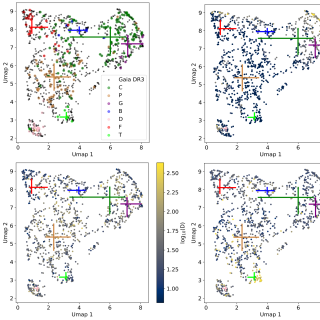The hypothesis of a universal initial mass function (IMF) - motivated by observations in nearby stellar systems - has been recently challenged by the discovery of a systematic variation of the IMF with the centralvelocity dispersion, σ, of early-type galaxies (ETGs), towards an excessof low-mass stars in high-σ galaxies. This trend has been derived so farfrom integrated spectra, and remains unexplained at present. To testwhether such trend depends on the local properties within a galaxy, we have obtained new, extremely deep, spectroscopic data, for three nearby ETGs, two galaxies with high σ (~300 km/s), and one lower mass system, with σ ~100 km/s. From the analysis of IMF-sensitive spectral features, we find that the IMF depends significantly ongalactocentric distance in the massive ETGs, with the enhanced fraction of low-mass stars mostly confined to their central regions. In contrast, the low-σ galaxy does not show any significant radial gradient in the IMF, well described by a shallower distribution, relative to the innermost regions of massive galaxies, at all radii. Such a result indicates that the IMF should be regarded as a local (rather than global) property, and suggests a significant difference between the formation process of the core and the outer regions ofmassive ETGs
Advertised on
References
It may interest you
-
 The formation and evolution of the disk of our Galaxy, the Milky Way, remains an enigma in astronomy. In particular, the relationship between the thick disk and the thin disk —two key components of the Milky Way— is still unclear. Understanding the chemical and dynamical properties of the stars within these disks is crucial, especially in the parameter spaces where their characteristics overlap, such the metallicity regime around [Fe/H] ~ -0.7, which marks the metal-poor end of the thin disk, higher than that of the thick disk. This is often interpreted as an indication that the thin diskAdvertised on
The formation and evolution of the disk of our Galaxy, the Milky Way, remains an enigma in astronomy. In particular, the relationship between the thick disk and the thin disk —two key components of the Milky Way— is still unclear. Understanding the chemical and dynamical properties of the stars within these disks is crucial, especially in the parameter spaces where their characteristics overlap, such the metallicity regime around [Fe/H] ~ -0.7, which marks the metal-poor end of the thin disk, higher than that of the thick disk. This is often interpreted as an indication that the thin diskAdvertised on -
 Asteroids are the remnants of the planetary formation in the Solar System and so, their study helps us to understand the conditions during the early stages of the formation of our planetary system. Among asteroids, those classified as primitives present similar spectra to that of carbonaceous chondrites, i.e., they are rich in carbon and organic compounds and silicates altered by the presence of liquid water (phyllosilicates). Primitive asteroids are well characterized in various wavelength regions, showing their most diagnostic feature at 3μm. However, there is a lack of information in theAdvertised on
Asteroids are the remnants of the planetary formation in the Solar System and so, their study helps us to understand the conditions during the early stages of the formation of our planetary system. Among asteroids, those classified as primitives present similar spectra to that of carbonaceous chondrites, i.e., they are rich in carbon and organic compounds and silicates altered by the presence of liquid water (phyllosilicates). Primitive asteroids are well characterized in various wavelength regions, showing their most diagnostic feature at 3μm. However, there is a lack of information in theAdvertised on -
 Massive stars, those over ten times heavier than our Sun, are the conduits of most elements of the periodic table and drive the morphological and chemical makeup of their host galaxies. Yet the origin of the most luminous and hottest stars among them, called 'blue supergiants', has been debated for many decades. Blue supergiants are strange stars. First, they are observed in large numbers, despite conventional stellar physics expecting them to live only briefly. Second, they are typically found alone, despite most massive stars being born with companions. Third, the majority of them harbourAdvertised on
Massive stars, those over ten times heavier than our Sun, are the conduits of most elements of the periodic table and drive the morphological and chemical makeup of their host galaxies. Yet the origin of the most luminous and hottest stars among them, called 'blue supergiants', has been debated for many decades. Blue supergiants are strange stars. First, they are observed in large numbers, despite conventional stellar physics expecting them to live only briefly. Second, they are typically found alone, despite most massive stars being born with companions. Third, the majority of them harbourAdvertised on